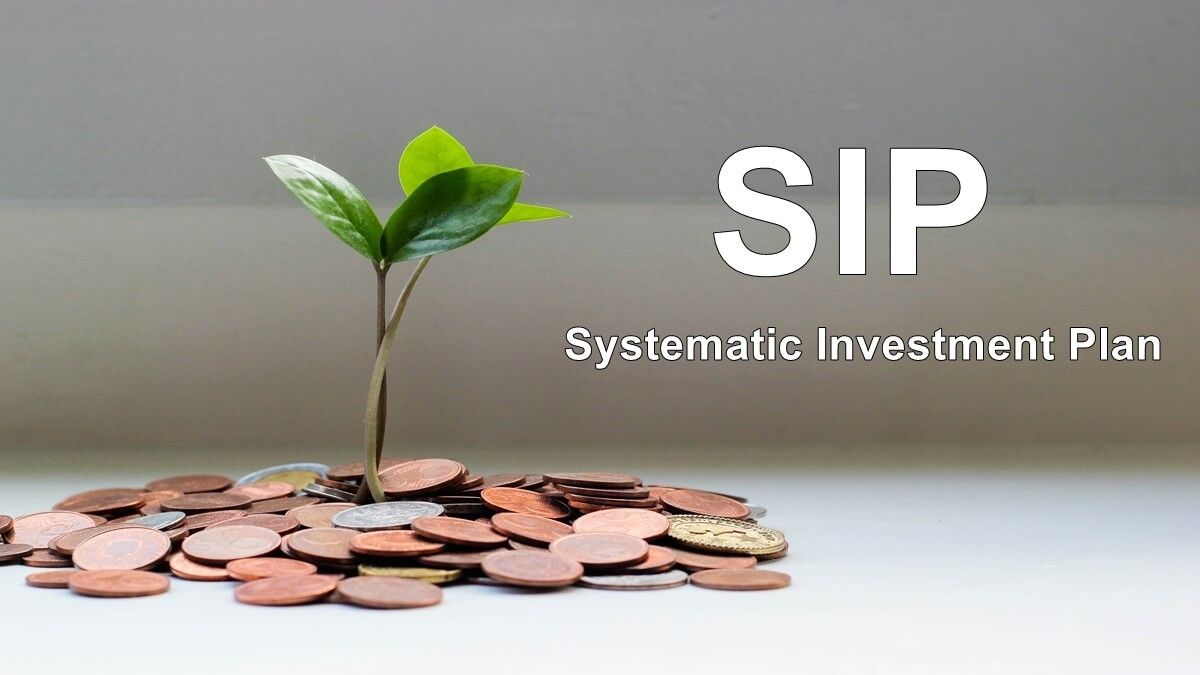Investing in the financial markets offers one of the most effective ways to build wealth and achieve long-term financial goals. However, navigating the complex and often unpredictable world of market investing requires more than just luck or following trends. Success comes from applying well-established strategies that balance risk and reward, adapt to changing market conditions, and align with your personal financial objectives. In this discussion, we will explore the key strategies that form the foundation of successful market investing strategies that can help investors make informed decisions, minimize risks, and maximize returns over time. Whether you are a beginner or an experienced investor, understanding and applying these principles can significantly improve your investment outcomes.
Key Takeaways
- Diversification reduces risk by spreading investments across various asset classes, industries, and regions.
- A long-term perspective helps investors withstand market volatility and benefit from compounding returns.
- Regular investing through dollar-cost averaging minimizes the impact of market timing.
- Thorough research and due diligence enable informed investment decisions.
- Risk management aligned with personal tolerance is essential to protect capital.
- Value investing focuses on buying undervalued assets with strong fundamentals.
- Growth investing targets companies with high earnings potential for greater returns.
- Portfolio rebalancing maintains the desired asset allocation and controls risk.
- Staying disciplined and emotionally detached prevents impulsive decisions driven by market swings.
- Continuous learning and flexibility ensure investors adapt to evolving market conditions.
Investing in the financial markets can be a powerful way to build wealth, but success requires more than just picking stocks or assets at random. It involves a well-thought-out approach grounded in principles that manage risk, capture opportunities, and align with your financial goals. Below are some of the key strategies that investors use to increase their chances of long-term success in the markets.
Diversification: Spreading Risk Across Different Assets

One of the foundational principles of successful investing is diversification. This means spreading your investments across a wide range of asset classes—such as stocks, bonds, real estate, and commodities—and within each asset class, investing in various sectors and geographic regions. The primary goal of diversification is to reduce the risk that a poor performance in one area will drastically impact your entire portfolio. For example, if technology stocks experience a downturn, holdings in bonds or consumer staples might remain stable or even rise, cushioning the overall portfolio.
Equities (Stocks): High potential return, high risk.
Bonds: Lower risk, income-focused.
Real Estate: Inflation hedge, long-term growth.
Commodities: Gold, oil — often inversely correlated with stocks.
Cash or Cash Equivalents: Stability and liquidity
Adopting a Long-Term Investment Horizon
Markets naturally fluctuate over days, months, or even years, which can tempt investors to make impulsive decisions. However, adopting a long-term perspective helps investors ride out volatility and benefit from the growth potential of compounding returns. Over extended periods, markets tend to trend upward despite periodic corrections or crashes. Staying invested through these ups and downs, rather than trying to time the market, often yields better results.
Set Clear Goals
- Define why you’re investing and when you’ll need the money.
- Helps align asset allocation with time horizon and risk tolerance.
Choose Long-Term Assets
- Focus on assets with long-term growth potential (e.g., stocks, index funds, real estate).
- Avoid excessive speculation or market timing.
Automate and Stick to a Plan
- Use automatic contributions to investment accounts (e.g., monthly).
- Don’t react emotionally to news or short-term market moves.
Reinvest Earnings
- Reinvest dividends and capital gains for compounded growth.
- Many mutual funds and ETFs offer automatic dividend reinvestment.
Review Periodically, Not Constantly
- Annual or semiannual reviews are often enough unless life goals change.
- Rebalance your portfolio when needed, not after every market move
Regular Investing Through Dollar-Cost Averaging
Trying to time the market perfectly is nearly impossible, even for seasoned professionals. Dollar-cost averaging (DCA) is a strategy where you invest a fixed amount of money at regular intervals, regardless of market conditions. This approach ensures that you buy more shares when prices are low and fewer when prices are high, reducing the average cost per share over time. DCA not only lowers the risk of investing a large sum at the wrong time but also encourages disciplined saving and investing habits.
Things to Keep in Mind
- DCA doesn’t protect against losses in a declining market.
- Over very long time horizons and in steadily rising markets, lump-sum investing may outperform DCA (but with higher short-term risk).
- Fees and commissions can reduce effectiveness if investing small amounts with high-cost brokers.
How to Implement DCA
- Choose your investment (e.g., index fund, ETF, or individual stock).
- Set a fixed amount (e.g., $200 every two weeks).
- Automate the process through your brokerage platform.
- Stick to the plan, especially when markets are down
Conducting Thorough Research and Due Diligence
Investing blindly or based on rumors can lead to poor outcomes. Successful investors take the time to research and understand the fundamentals of the companies, funds, or assets they invest in. This includes analyzing financial statements, competitive advantages, industry trends, management quality, and macroeconomic factors. Staying informed about the broader economic environment and market news also helps investors make educated decisions and avoid pitfalls.
Due diligence is the careful evaluation of a potential investment to:
- Understand the financial health and fundamentals
- Assess risk factors and opportunities
- Determine whether it aligns with your investment strategy and goals
Think of it as your pre-investment checklist before committing money.
Managing Risk According to Your Tolerance

Every investor has a different comfort level when it comes to risk. A key strategy is to assess your personal risk tolerance honestly and build a portfolio aligned with it. Risk management techniques include setting stop-loss orders to limit potential losses, diversifying holdings, and balancing growth-oriented investments with more stable, income-generating assets. Avoiding overexposure to speculative or highly volatile investments is essential to preserve capital.
Assess Your Risk Profile
- Consider your age, investment goals, time horizon, and financial situation.
- Reflect on how you’ve reacted to past market volatility.
- Use online questionnaires or consult a financial advisor.
Choose an Appropriate Asset Allocation
- Aggressive: Higher % in stocks and growth assets (70–90% stocks).
- Moderate: Balanced mix of stocks and bonds (50–70% stocks).
- Conservative: Higher % in bonds and stable assets (20–40% stocks).
Diversify Your Portfolio
- Spread investments across different assets to reduce risk (stocks, bonds, real estate).
- Avoid concentration in any single stock or sector.
Use Risk Management Tools
- Set stop-loss orders if appropriate.
- Use hedging strategies (options, inverse ETFs) if you understand them.
- Keep some cash reserves for liquidity and opportunities.
Review and Adjust Periodically
- Life changes (e.g., marriage, kids, retirement) affect your risk tolerance.
- Rebalance your portfolio to maintain target risk levels.
Value Investing: Finding Undervalued Opportunities
Value investing involves identifying stocks or assets that are trading below their intrinsic or true value based on fundamentals like earnings, dividends, and book value. Investors who follow this approach seek bargains in the market—companies that the broader market has overlooked or undervalued. This strategy requires patience, as the market may take time to recognize the true worth of these investments, but it has historically led to strong returns.
Intrinsic Value
- The true worth of an asset based on fundamentals (not the current market price).
- Calculated using metrics like earnings, dividends, cash flow, and growth potential.
- If the market price is below the intrinsic value, it may be a buying opportunity.
Margin of Safety
- Buy with a buffer between the stock’s price and its estimated value.
- Example: If a stock is worth $100 and you buy it at $70, you have a 30% margin of safety.
- Protects you against errors in analysis or market downturns.
Long-Term Patience
- Markets can stay irrational longer than you’d expect.
- Value investors often hold assets for years until the value is realized
Growth Investing: Targeting High-Potential Companies

Conversely, growth investing focuses on companies expected to grow their earnings and revenues faster than the market average. These companies often reinvest profits to expand operations and capture new markets. Growth stocks tend to be more volatile and carry higher risk but offer the potential for significant capital appreciation. Investors who pursue this strategy should be prepared for short-term fluctuations in pursuit of long-term gains.
Focus on Future Earnings Potential
- Growth investors prioritize companies expected to increase earnings significantly over time.
- These companies often reinvest profits back into the business rather than paying dividends.
High Revenue Growth Rates
- Look for companies with strong historical and projected revenue growth—often 15% or higher annually.
- Growth companies frequently operate in expanding industries like technology, healthcare, or renewable energy.
Innovation and Competitive Advantage
- Growth firms often have innovative products, proprietary technology, or disruptive business models.
- They may be market leaders or emerging players reshaping their sectors.
Higher Valuations
- Growth stocks typically trade at higher price-to-earnings (P/E) or price-to-sales (P/S) ratios because investors expect future profits to justify the premium.
- This means growth investing involves accepting higher current valuations for the potential of significant future returns.
How to Identify Growth Stocks
- Revenue & Earnings Growth: Consistent double-digit growth over multiple years.
- Strong Management Team: Visionary leadership capable of scaling the business.
- Expanding Market Opportunity: Large or growing addressable market (Total Addressable Market – TAM).
- Healthy Margins & Cash Flow: Evidence that growth is profitable or moving toward profitability.
- Competitive Moat: Barriers to entry, brand strength, patents, or network effects
Value Investing
- Key metrics: P/E ratio, P/B ratio, dividend yield
- Identifying undervalued stocks
- Risks of value traps
- Famous value investors (e.g., Warren Buffett, Benjamin Graham)
- Comparing intrinsic value vs. market price
- Types of diversification: asset class, sector, geography
- Benefits: risk reduction, smoother returns
- Diversification vs. over-diversification
- How to diversify effectively using ETFs and mutual funds
- Real-life portfolio examples
Regular Portfolio Rebalancing
As markets move, your portfolio’s asset allocation may drift away from your desired risk profile. Rebalancing involves periodically reviewing and adjusting your holdings to restore the original or updated allocation targets. This disciplined process often means selling assets that have grown disproportionately and buying those that have lagged, thereby enforcing a “buy low, sell high” approach. Rebalancing helps control risk and maintain alignment with investment goals.
Staying Disciplined and Emotionally Detached
Emotions can be the enemy of successful investing. Fear and greed often drive investors to buy high during market euphoria and sell low during panics. Maintaining discipline—sticking to your investment plan, avoiding impulsive reactions, and not chasing hot tips—is critical to achieving steady long-term results. Using tools like automated investments, pre-set rebalancing schedules, and clear financial goals can help reduce emotional decision-making.
Follow a Written Investment Plan
- Include your goals, time horizon, risk tolerance, and asset allocation.
- Refer back to your plan when tempted to make emotional decisions.
Automate Your Investing
- Use automatic monthly contributions to investment accounts.
- Automate dividend reinvestment and rebalancing to reduce emotional input.
Focus on the Long Term
- Remind yourself that short-term volatility is normal.
- Market corrections and bear markets are opportunities, not threats, for disciplined investors.
Avoid Checking Your Portfolio Too Often
- Daily monitoring leads to emotional overreaction.
- Set a schedule—monthly or quarterly reviews are usually sufficient for long-term investors.
Dollar-Cost Averaging

Dollar-cost averaging (DCA) is a disciplined investment technique where an investor consistently invests a fixed amount of money at regular intervals, regardless of the market’s current condition. This approach removes the emotional element from investing and reduces the risk associated with trying to time the market.
What Is Dollar-Cost Averaging?
- You invest a set amount (e.g., $200) every month into a particular asset (like stocks or ETFs).
- When prices are high, your fixed amount buys fewer shares.
- When prices are low, the same amount buys more shares.
- Over time, this tends to lower your average cost per share.
Why Use Dollar-Cost Averaging?
- Reduces timing risk: You don’t need to predict market highs or lows.
- Builds disciplined investing habits: Investing regularly encourages consistency.
- Takes advantage of volatility: You automatically buy more shares during market dips.
- Easier on your budget: Smaller, regular investments can be more manageable than lump sums.
- How DCA works with examples
- Advantages over lump-sum investing
- Ideal scenarios for using DCA
- Psychological benefits: reduces emotional investing
- Limitations of DCA in rapidly rising markets
Continuous Learning and Flexibility
Markets and economies evolve, influenced by technological advancements, geopolitical events, and shifting consumer behaviors. Successful investors commit to ongoing education, staying abreast of new investment products, regulatory changes, and global trends. Being adaptable and willing to revise your strategies when warranted helps you remain competitive and responsive to changing market conditions.
- Identify emerging trends before the crowd
- Understand changing risks and correlations
- Improve your decision-making over time
Also Read: What Is Return on Investment and Why Does It Matter?
Conclusion
Investing successfully in the markets is a journey that requires more than just luck or following the latest trends—it demands a thoughtful, strategic approach grounded in proven principles. The key strategies outlined—diversification, maintaining a long-term perspective, investing regularly through dollar-cost averaging, conducting thorough research, managing risk, and staying disciplined—form the bedrock of sound investing. Each of these components plays a crucial role in helping investors navigate the inherent uncertainties and volatility of financial markets.
Diversification helps spread risk and protect portfolios from unpredictable downturns, while a long-term mindset allows investors to benefit from the power of compounding and market recoveries. Regular investing ensures that you remain consistent and avoid the pitfalls of market timing. Meanwhile, conducting detailed research empowers investors to make informed decisions based on fundamentals rather than emotions or speculation. Effective risk management aligned with personal tolerance helps safeguard capital and maintain peace of mind through turbulent periods
FAQs
What is diversification, and why is it important?
Diversification means spreading your investments across different asset types, sectors, and regions to reduce risk. It helps protect your portfolio from the poor performance of any single investment.
How long should I stay invested in the market?
A long-term horizon—typically several years or decades—is recommended to ride out market volatility and benefit from compound growth.
What is dollar-cost averaging, and how does it work?
Dollar-cost averaging is investing a fixed amount regularly regardless of market prices. This strategy reduces the risk of investing a lump sum at an inopportune time and smooths out the average purchase price.
How do I determine my risk tolerance?
Risk tolerance depends on factors like your financial goals, investment timeline, income stability, and emotional comfort with market ups and downs. Many online questionnaires and financial advisors can help you assess this.
What is the difference between value investing and growth investing?
Value investing focuses on buying undervalued stocks that are trading below their intrinsic worth, while growth investing targets companies expected to grow earnings faster than the overall market.
Why is portfolio rebalancing necessary?
Rebalancing adjusts your portfolio back to your desired asset allocation. It helps manage risk and ensures you don’t become overexposed to any single asset class.
How can I avoid emotional decision-making in investing?
Sticking to a clear investment plan, avoiding market timing, and using automated investment tools can help reduce emotional reactions to market volatility.
Is it necessary to constantly monitor my investments?
While staying informed is important, constantly reacting to short-term market movements can be detrimental. Periodic reviews aligned with your strategy are usually sufficient.
Can beginners apply these strategies?
Absolutely. These strategies are designed to help investors of all levels, especially beginners, create a strong foundation for successful investing.
How important is continuous learning in investing?
Very important. Markets and economies evolve, so staying educated helps you adapt your strategy and make better decisions over time.


